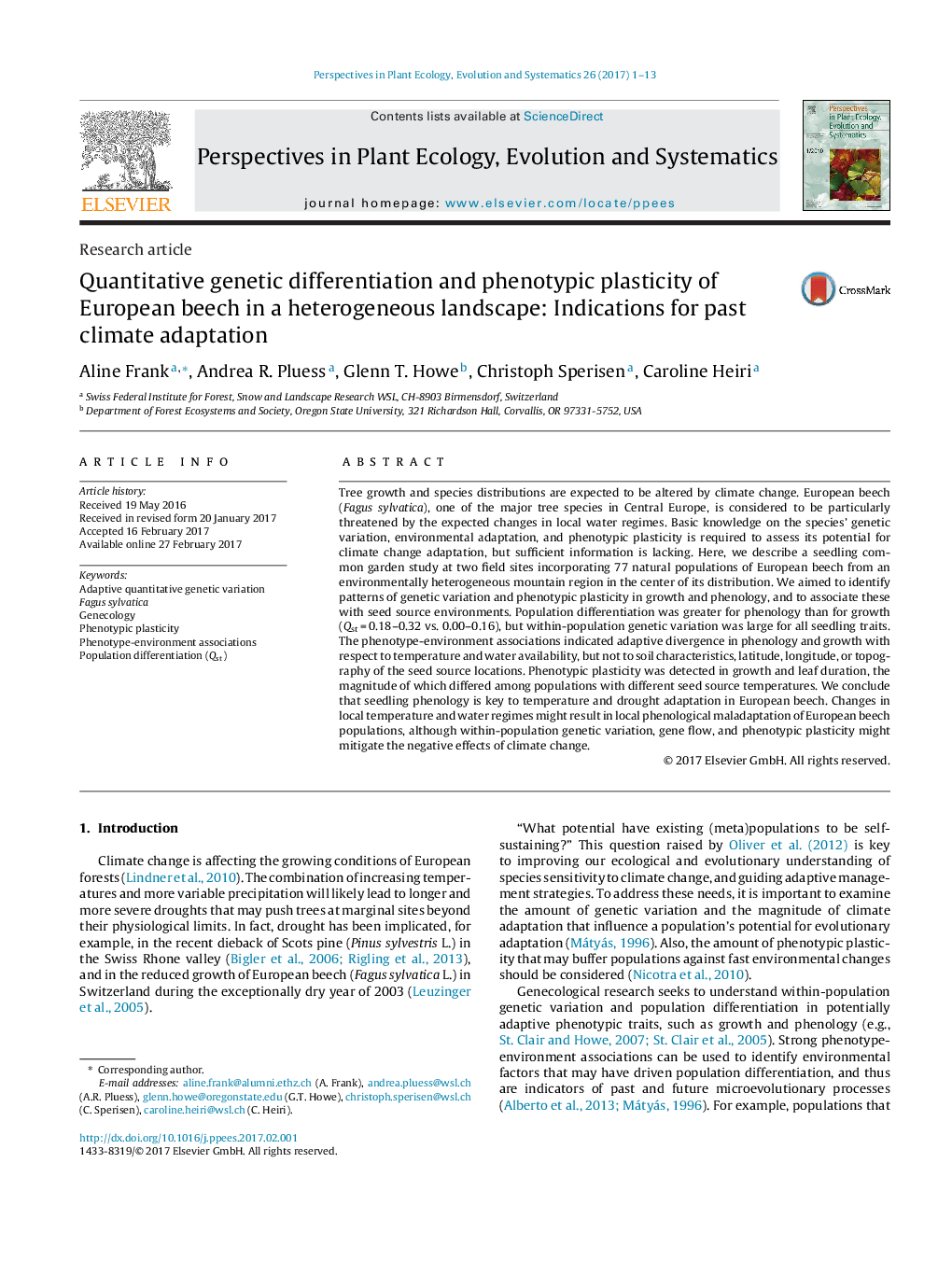| کد مقاله | کد نشریه | سال انتشار | مقاله انگلیسی | نسخه تمام متن |
|---|---|---|---|---|
| 5744947 | 1618594 | 2017 | 13 صفحه PDF | دانلود رایگان |
⬢Larger population differentiation and trait-climate associations for phenology than growth.⬢Adaptive divergence in phenology and growth with respect to temperature and water availability.⬢Minor associations of phenotypes with soil characteristics and geo-topographic variables.⬢Phenotypic plasticity in growth and leaf duration indicated adaptive plasticity.
Tree growth and species distributions are expected to be altered by climate change. European beech (Fagus sylvatica), one of the major tree species in Central Europe, is considered to be particularly threatened by the expected changes in local water regimes. Basic knowledge on the species⬢ genetic variation, environmental adaptation, and phenotypic plasticity is required to assess its potential for climate change adaptation, but sufficient information is lacking. Here, we describe a seedling common garden study at two field sites incorporating 77 natural populations of European beech from an environmentally heterogeneous mountain region in the center of its distribution. We aimed to identify patterns of genetic variation and phenotypic plasticity in growth and phenology, and to associate these with seed source environments. Population differentiation was greater for phenology than for growth (Qst = 0.18â¬0.32 vs. 0.00â¬0.16), but within-population genetic variation was large for all seedling traits. The phenotype-environment associations indicated adaptive divergence in phenology and growth with respect to temperature and water availability, but not to soil characteristics, latitude, longitude, or topography of the seed source locations. Phenotypic plasticity was detected in growth and leaf duration, the magnitude of which differed among populations with different seed source temperatures. We conclude that seedling phenology is key to temperature and drought adaptation in European beech. Changes in local temperature and water regimes might result in local phenological maladaptation of European beech populations, although within-population genetic variation, gene flow, and phenotypic plasticity might mitigate the negative effects of climate change.
Journal: Perspectives in Plant Ecology, Evolution and Systematics - Volume 26, June 2017, Pages 1-13
